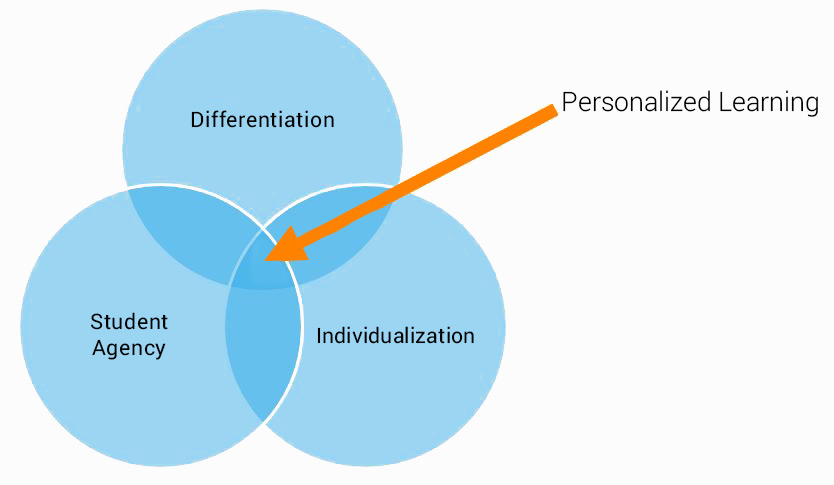Differentiation
Edwords (ěd · words) n. 1. PreK-12 glossary breaking through buzzwords to solve the challenge of a common definition. 2. Renaissance® resource to help educators take part in discussion, debate, and meaningful discourse. 3. Educators’ jargon buster.
What is differentiation?
“Differentiation refers to “learning experiences in which the approach or method of learning is adjusted to meet the needs of individual students, focusing on the ‘how’ of personalized learning.”
(Culatta, R. 2016)
Differentiation focuses on the “how” of personalized learning
Differentiation is one of three elements of personalized learning and involves changing the instructional approach to meet the diverse needs of students. Differentiation may involve designing and delivering instruction using an assortment of teaching styles and giving students options for taking in information and making sense of ideas.
Richard Culatta, Chief Innovation Officer with the state of Rhode Island, points out that differentiation should not be confused with the concept of learning styles, which assumes some students are predisposed to learning in certain ways. He states that while students may have preferences for how they learn, we should not assume a student who found a particular video helpful, for example, should now be presented all concepts in video format. Learning is far more complex.

How do teachers practice differentiation in the classroom?
Differentiating instruction may involve teaching the same material to all students using a variety of instructional strategies. A teacher may deliver lessons at varying levels of difficulty or group students by shared interest, topic or ability, while continually assessing and adjusting lesson content to meet students’ needs.
Carol Ann Tomlinson, a leader in the area of differentiated learning and Professor of Educational Leadership, Foundations and Policy at the University of Virginia, describes differentiated instruction as factoring in students’ individual learning styles and levels of readiness before designing a lesson plan. According to Tomlinson, teachers can differentiate instruction through content, process, product, and learning environment.
- Content: A teacher may differentiate content with diverse materials, or with group activities that vary depending on students’ familiarity with lesson concepts. For example, students may complete tasks on lower or higher levels of Bloom’s Taxonomy (levels of intellectual behavior from lower to higher-order thinking). The levels are remembering, understanding, applying, analyzing, evaluating, and creating.
- Process: A teacher may find new ways to present material to maintain a student’s interest level. Not all students require the same support, and students may work in pairs, small groups, or individually. Teachers also offer support based on needs and preferred learning styles, delivering material to each style: visual, auditory and kinesthetic, and through words.
- Product: The product a student creates at the end of a lesson to demonstrate mastery of the content can be in the form of tests, projects, reports, or other activities. Teachers may also assign students different activities that show mastery of a concept.
- Learning environment: Conditions for optimal learning include physical and psychological elements such as incorporating furniture and arrangements for individual and group work, and using classroom management techniques to create a safe, supportive learning environment.
Why does differentiation matter, anyway?
Differentiation plays an important role in personalized learning. Research on the effectiveness of differentiation shows this method benefits a wide range of students, from those with learning disabilities to those who are considered high ability.
References
- Culatta R. (2016). What Are You Talking About?! The Need for Common Language around Personalized Learning. Retrieved from: http://er.educause.edu/articles/2016/3/what-are-you-talking-about-the-need-for-common-language-around-personalized-learning.
- Kerns, Gene (2016). How can we make sense of personalized learning?. Renaissance. Retrieved from: https://www.renaissance.com/2016/11/23/how-can-we-make-sense-of-personalized-learning/.
- Weselby C. (2017). What is Differentiated Instruction? Examples of How to Differentiate Instruction in the Classroom. Retrieved from: http://education.cu-portland.edu/blog/teaching-strategies/examples-of-differentiated-instruction/.
